
Buying and Selling Game Contest Christmas 2021 Edition – 50 Hive to be won
Hi Everyone,
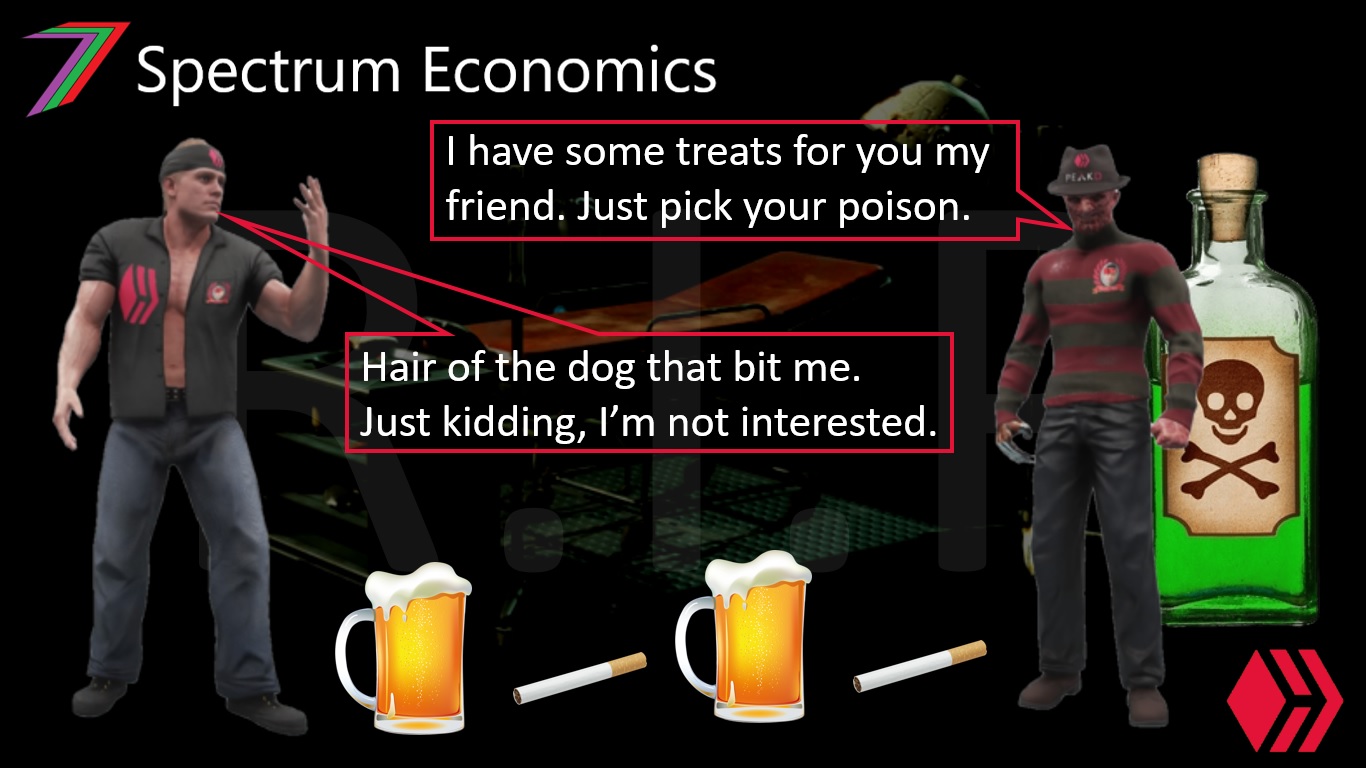
People can suffer from many different types of addictions. All addictions can be harmful to us as they lead to an overindulgence of the subject of our addiction. Some addictions are more dangerous than others. This depends on what we are addicted to as well as extent of the addiction. Addictions can be dangerous because of the direct harm they cause to our bodies, for example, the consumption of toxic substances. Addictions can be dangerous because of the behaviour they induce. For example, violent behaviour to acquire money to support the addiction.
In this post, I focus on the consumption of harmful substances (referred to as poison in this post) such as alcohol, tobacco, and drugs. I discuss the trends in recent years, the success of businesses providing these substances, and how the harm caused by being addicted to poison could be approached.
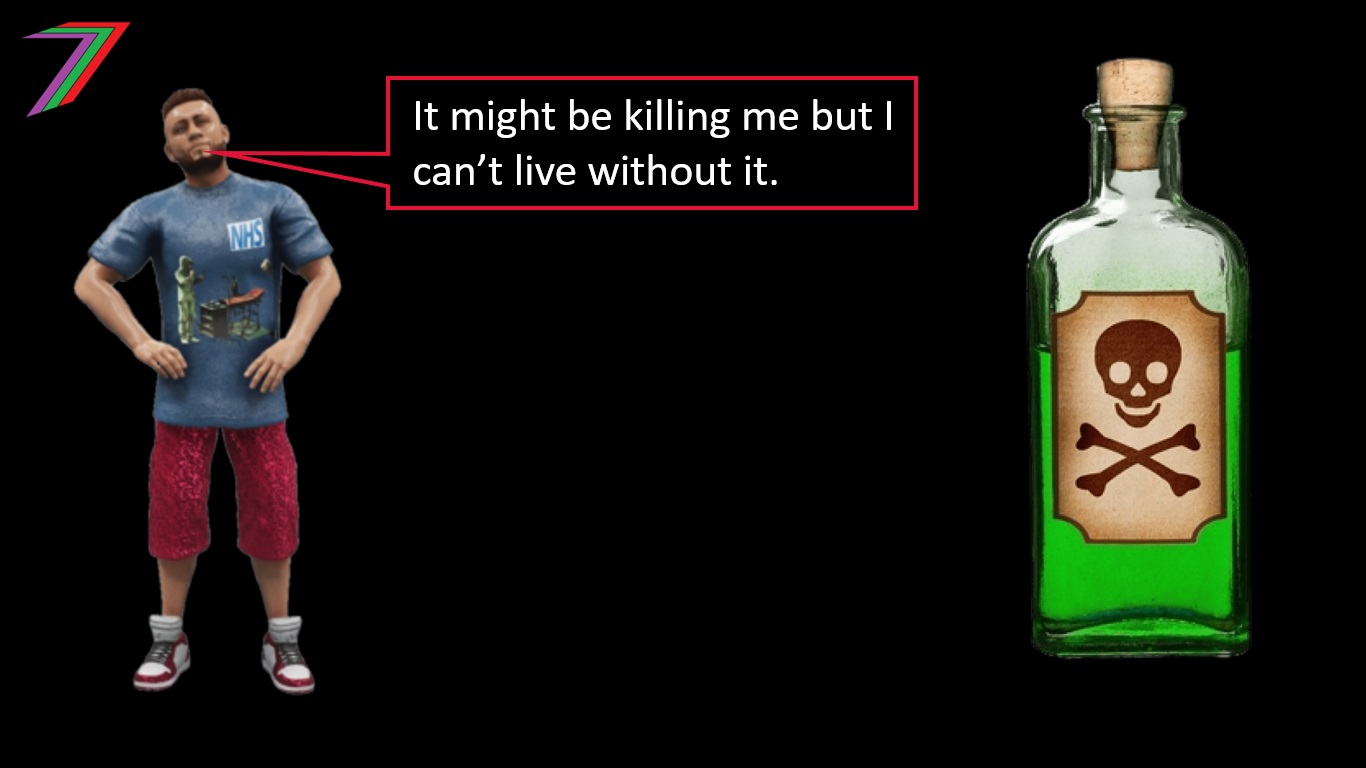
To clarify how I intend to use the terms ‘addiction’ and ‘poison’, I have taken a few definitions from some well-known dictionaries.
The state of being compulsively committed to a habit or practice or to something that is psychologically or physically habit-forming, as narcotics, to such an extent that its cessation causes severe trauma (Dictionary.com).
A compulsive, chronic, physiological or psychological need for a habit-forming substance, behaviour, or activity having harmful physical, psychological, or social effects and typically causing well-defined symptoms (such as anxiety, irritability, tremors, or nausea) upon withdrawal or abstinence : the state of being addicted (merriam-webster).
A compulsive habit that people obtain through repetition (Urban Dictionary)
The definitions provided by the dictionaries are consistent. They all emphasis ‘compulsive habits’ as well as a difficulty in being able to cease the ‘compulsive habits’.
A substance with an inherent property that tends to destroy life or impair health (Dictionary.com).
A substance that through its chemical action usually kills, injures, or impairs an organism (merriam-webster).
Someone or a substance that causes problems, hurt, injury, illness, or death, especially by chemical means (Urban Dictionary).
The definitions consistently state that ‘poison’ is a substance that causes serious harm.
Therefore, addiction to poison is a compulsive habit of exposing oneself to a harmful substance.
Drugs can be both addictive and poisonous. How much of a problem is drug addiction and is it getting worse? Figure 1 contains the number of drug related deaths per million people in England and Wales and Figure 2 contains the number of drug overdose deaths in the USA.
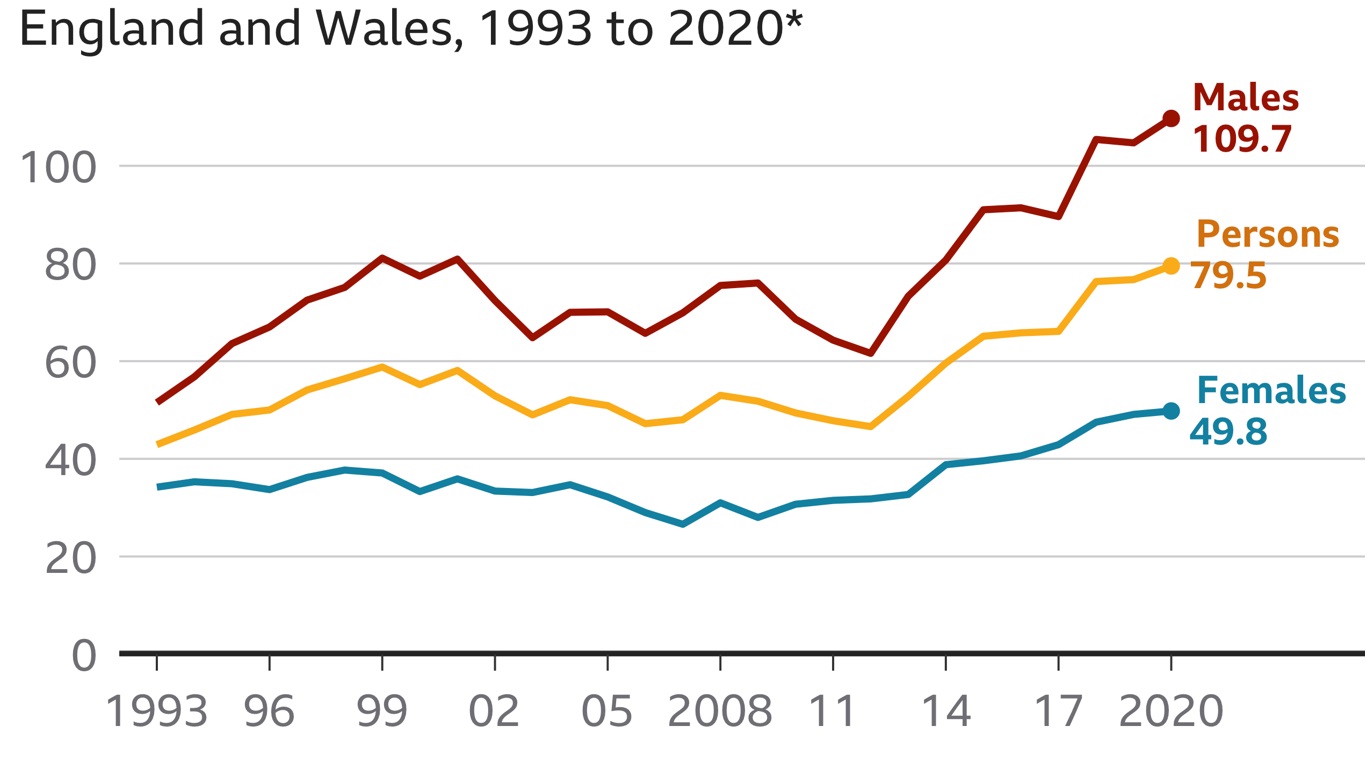
Source: Office of National Statistics cited by the BBC
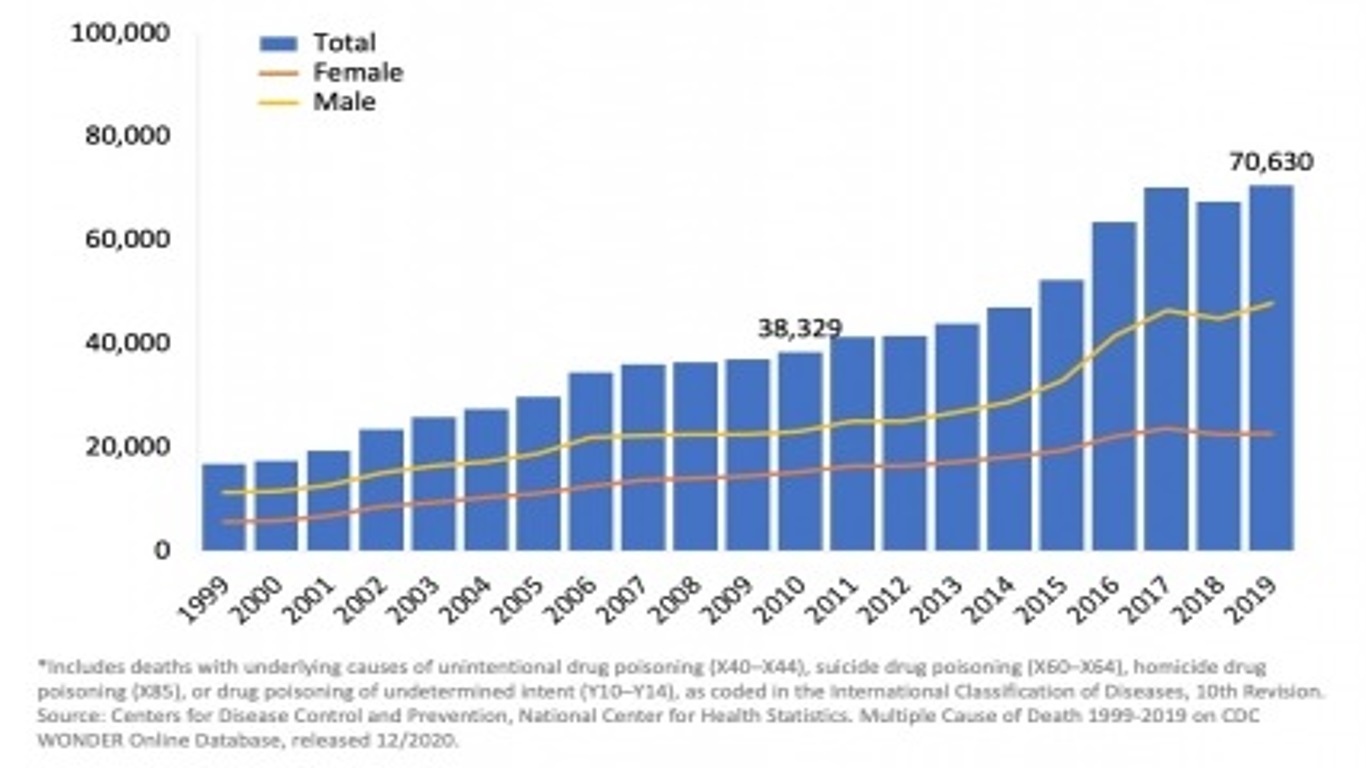
Source: National Institute on Drug Abuse
The number of drug related deaths have increased significantly for both the UK and USA over the past decade (approximately doubling for both countries). These figures do not include long-term medical complications caused by drug abuse, which is also likely to be climbing.
Alcohol can be both addictive and toxic if taken in excessive quantities. How much of a problem is alcohol addiction and is it getting worse? Figure 3 contains the rate of hospital admissions for alcohol related conditions in the UK and Figure 4 captures the number of alcohol, drug, and suicide deaths in the USA.
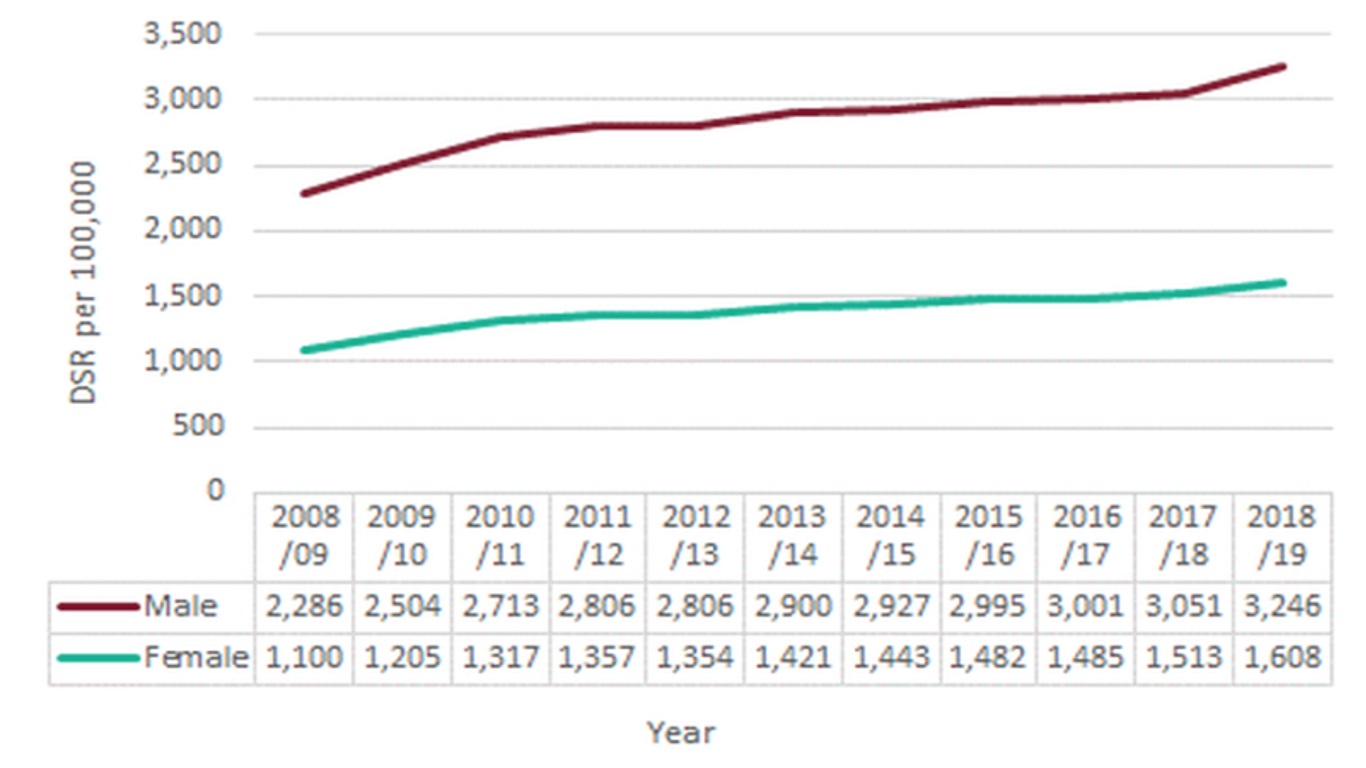
Source: Alcohol Policy UK
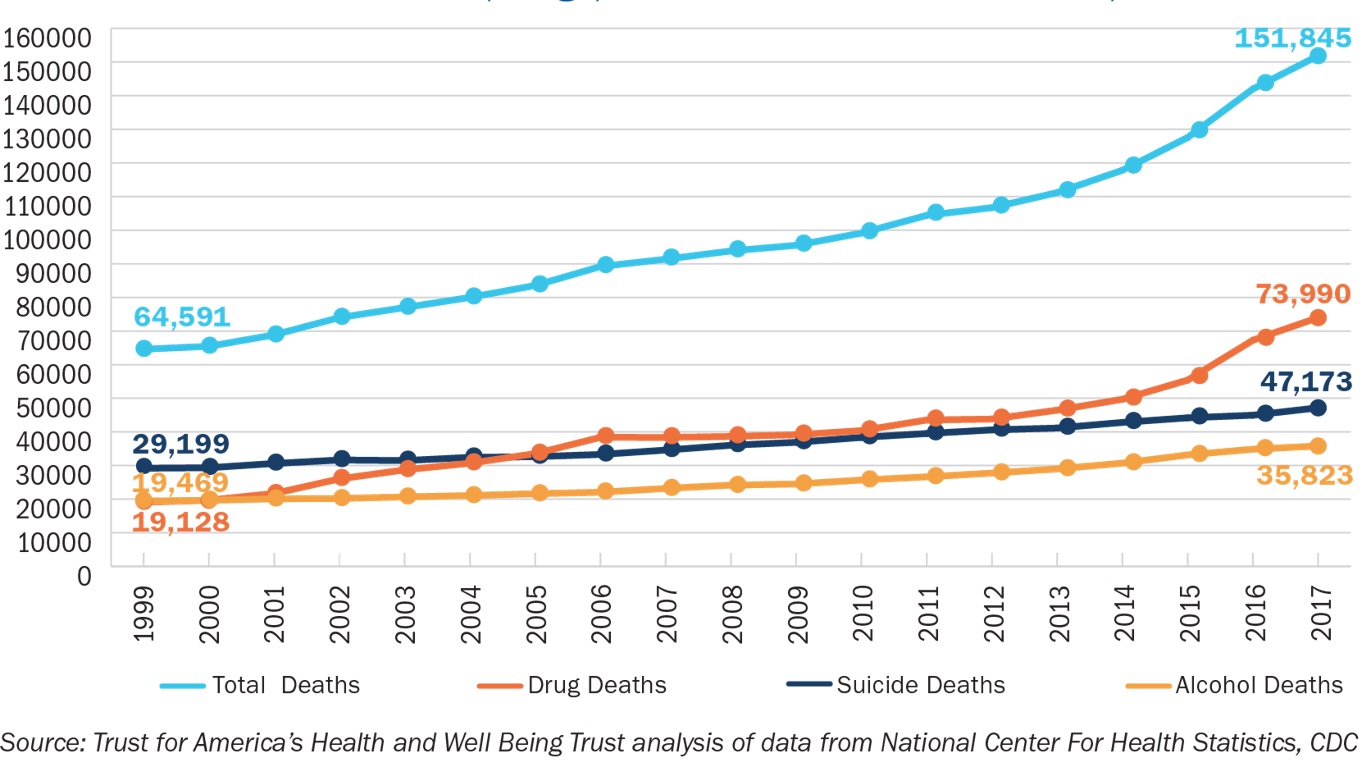
Source: Trust for America’s Health
The above figures indicate that the number of alcohol related illnesses and deaths are increasing for both the UK and the USA. However, this increase is less sharp than drug related deaths. Figure 4 displays a comparison between alcohol related and drug related deaths in the USA.
Tobacco can be addictive and the inhaled smoke is poisonous to our lungs and damaging to our overall health. How much of a problem is tobacco addiction and is it getting worse? Figure 5 contains the death rate for smoking related diseases/illnesses for the world and several other countries from 1990 to 2017.
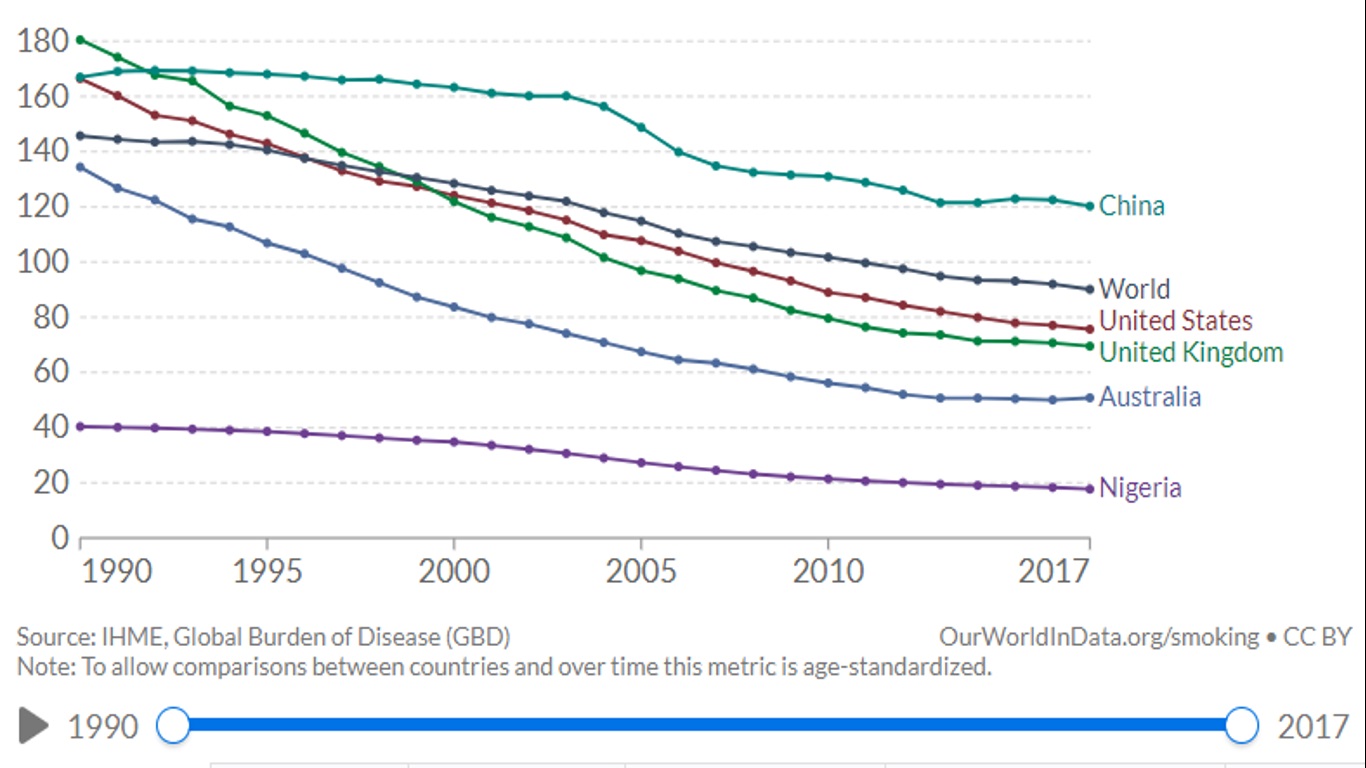
Source: Our World in Data
The death rate linked to smoking is declining on average for the world and Figure 5 indicates the same for countries such as USA, Great Britain, China, Nigeria, and Australia. This fall coincides with decreases in smoking rates for several of these countries. Figure 6 contains the smoking rates for the USA, UK, and Australia.
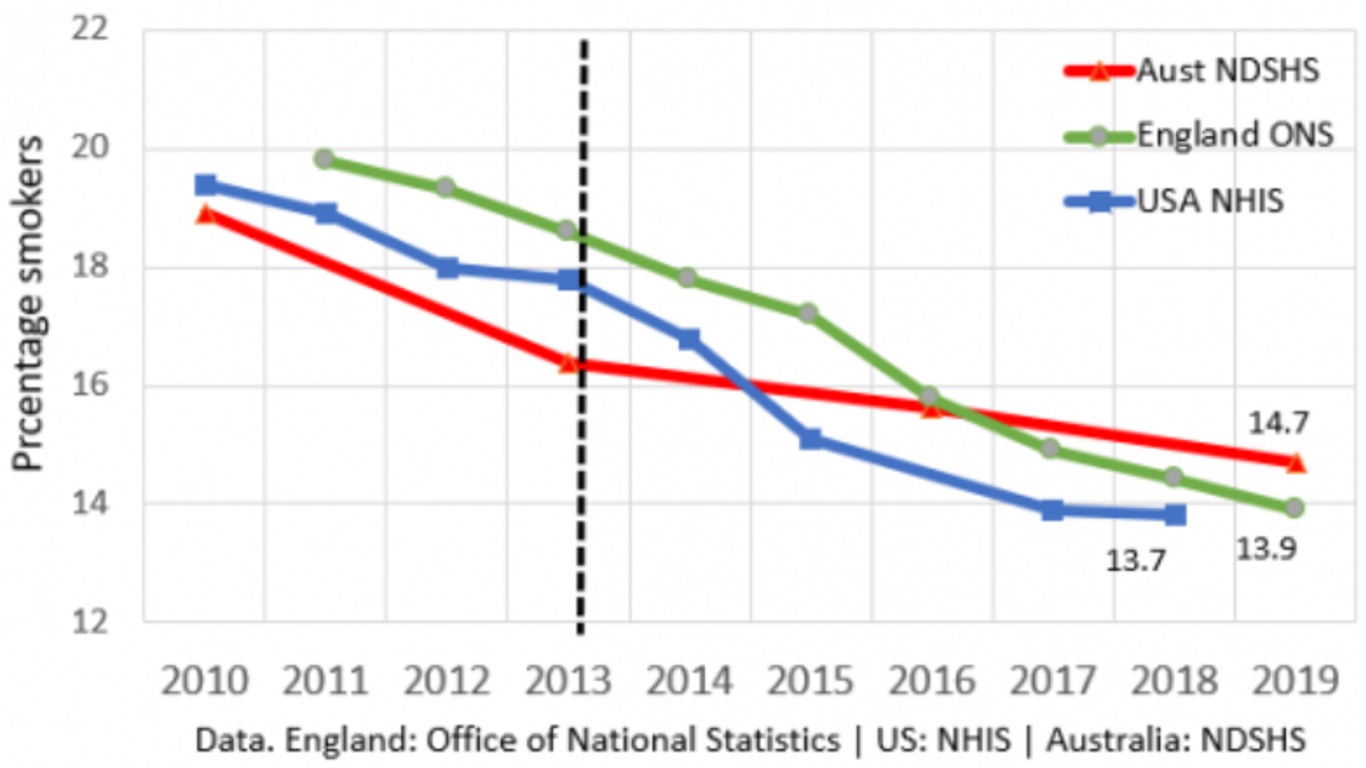
Source: ONS, NHIS, and NDSHS cited by The Counterfactual
However, declining consumption of cigarettes and other tobacco products is still a serious problem in some countries. Even though, death rates and smoking rates are declining in the UK, the number of hospital admissions are still increasing; see Figure 7 below.
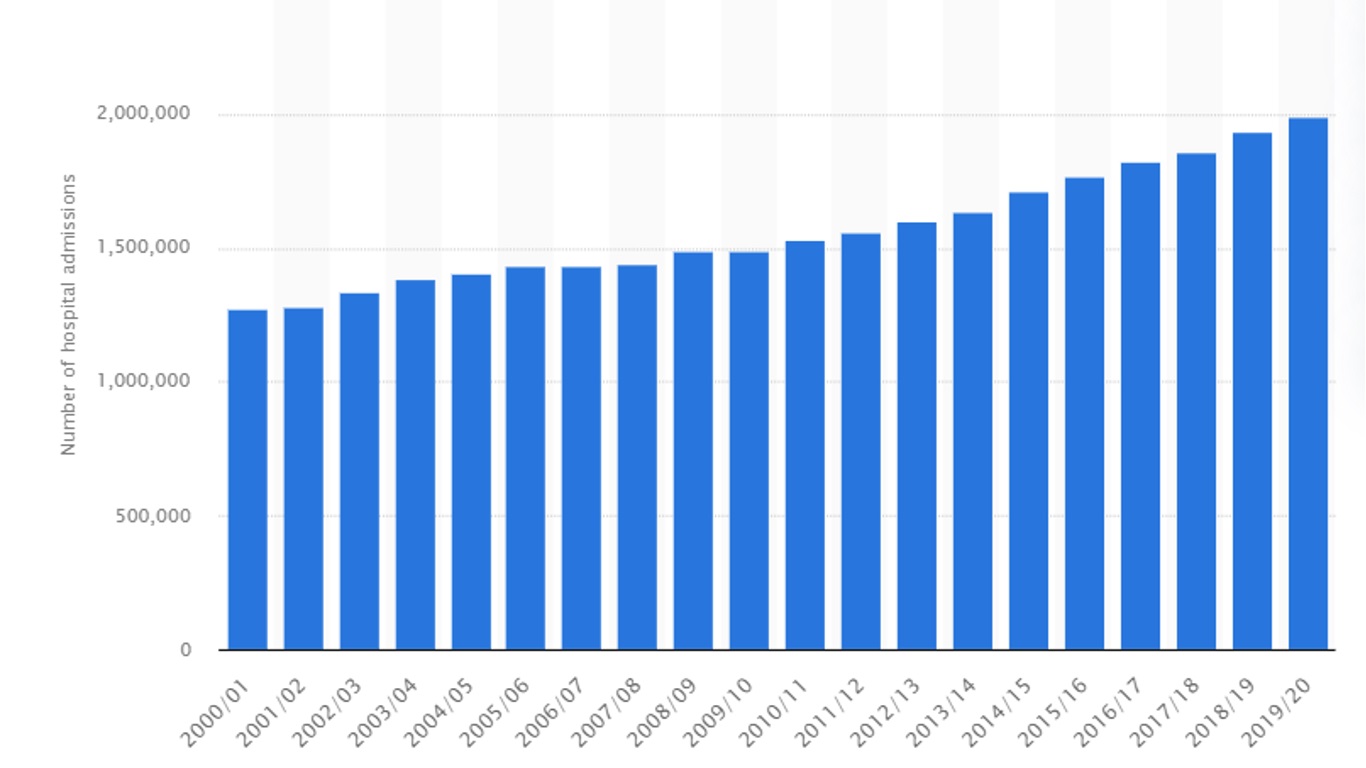
Source: Statista
The rising number of hospitalisations is likely due to the lag between consumption of cigarettes and disease. Most diseases occur because of persistent and long-term usage of tobacco products. Figure 8 compares consumption of cigarettes and the occurrence of lung cancer.
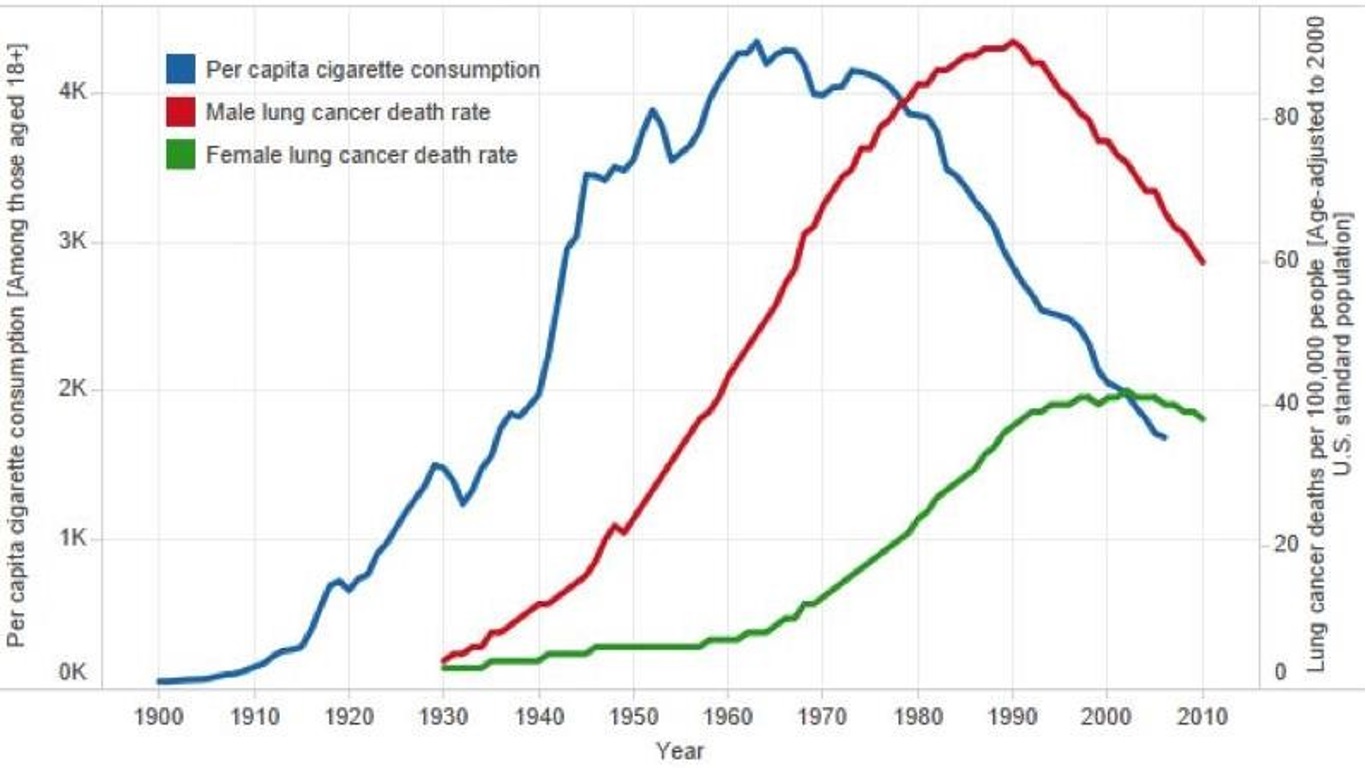
Source: eLife
It appears the decline in the rate of lung cancer lags the decline in cigarette consumption by up to as long as 25 years. It is quite likely former smokers could also suffer from other long-term effects many years after they have quit.
Not all countries are experiencing a decrease in the rate of smoking. Figure 9 contains data of smoking rates for countries with increased rates of smoking between 2000 and 2015.

Source: World Economic Forum
Even the global consumption of cigarettes has only marginally decreased over the past 20 years. Figure 10 contains global cigarette consumption.
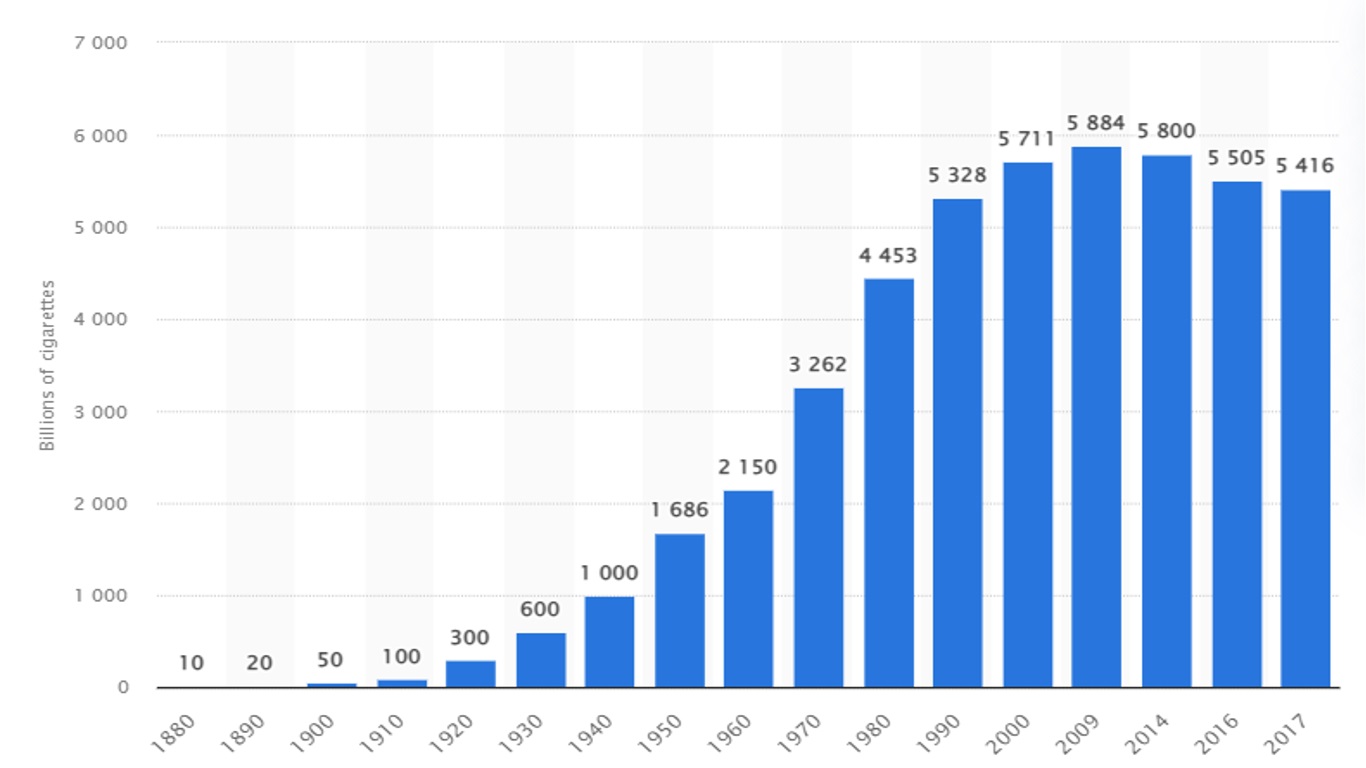
Source: Statista
Smoking related deaths have significantly fallen over the past few decades but the consumption of cigarettes has fallen by a far less significant number. There are several possible reasons for this difference.
The relatively small decrease in the quantity of cigarettes sold has enabled the tobacco industry to maintain the size of its market. Figure 11 contains the market value of tobacco manufacturing in the USA between 2012 and 2021.
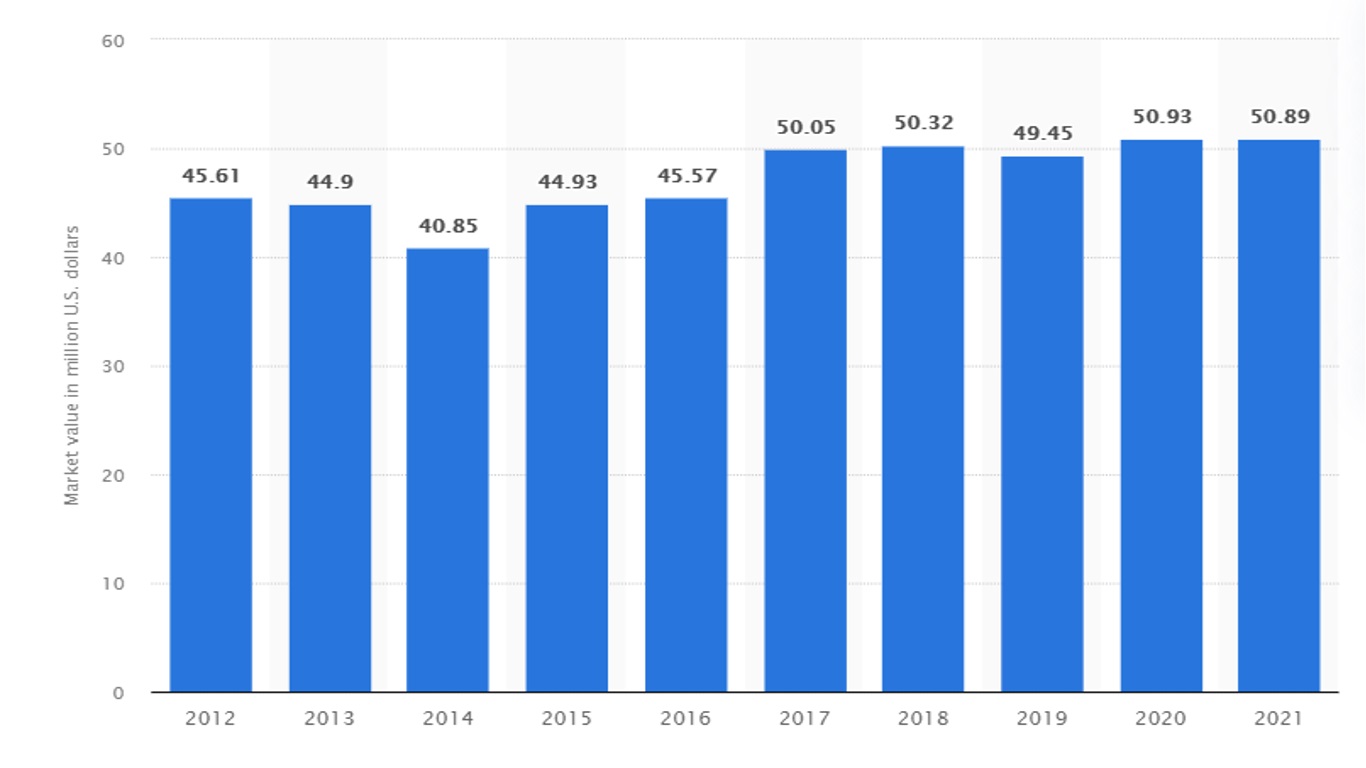
Source: Statista
It is unlikely we will see the disappearance of cigarettes because of lack of demand or reduced profits any time soon.
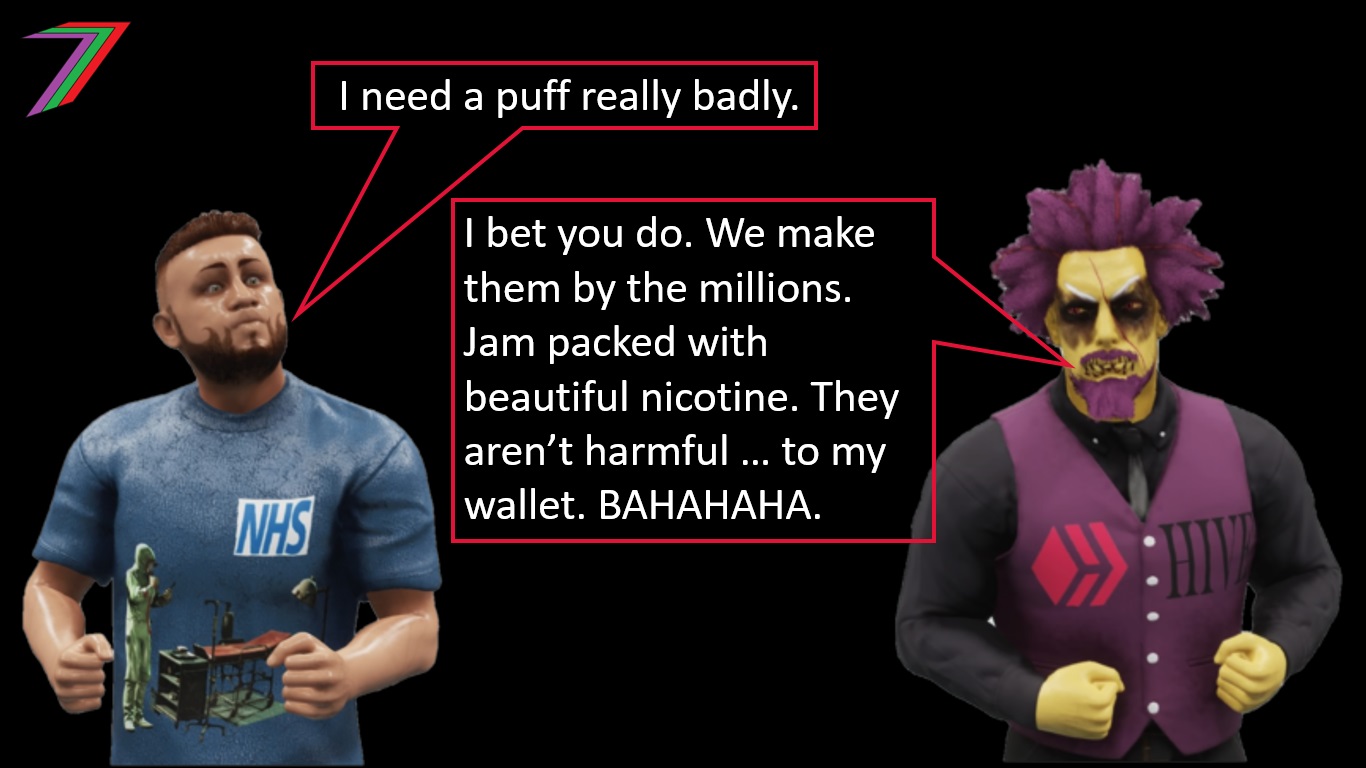
In my post, Oligopoly – The market structure that does not let the market decide, I heavily criticise the oligopoly market and its inability to provide customers with the outcomes that they truly want. Businesses that produce and/or supply addictive and potentially poisonous substances often fall into the oligopoly market structure.
Alcohol industries, particularly beer, are dominated be just a few companies worldwide. Figure 12 contains the leading brands of beer and their respective parent companies.
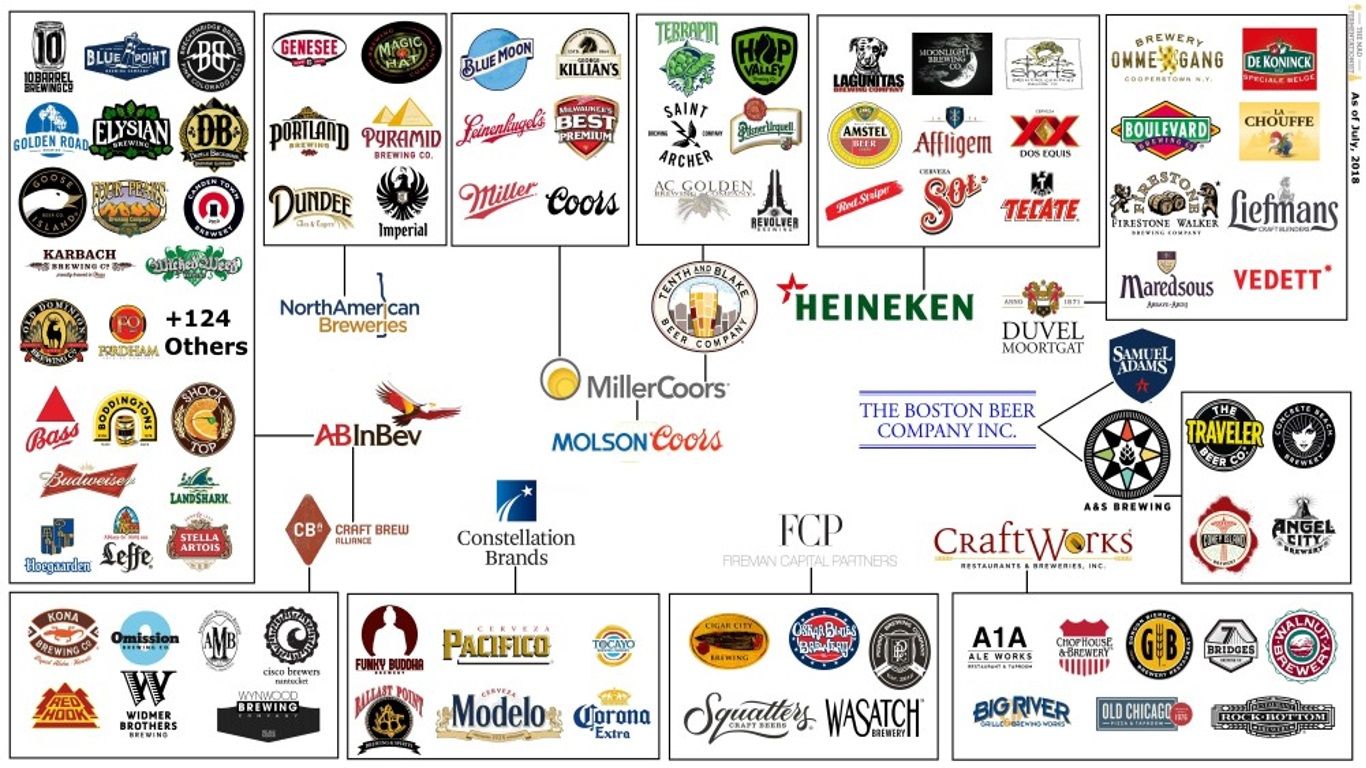
Source: Wine Bersekers
Just a few large companies dominate the cigarette markets. Figure 13 contains the leading tobacco companies worldwide based on sales in 2020.
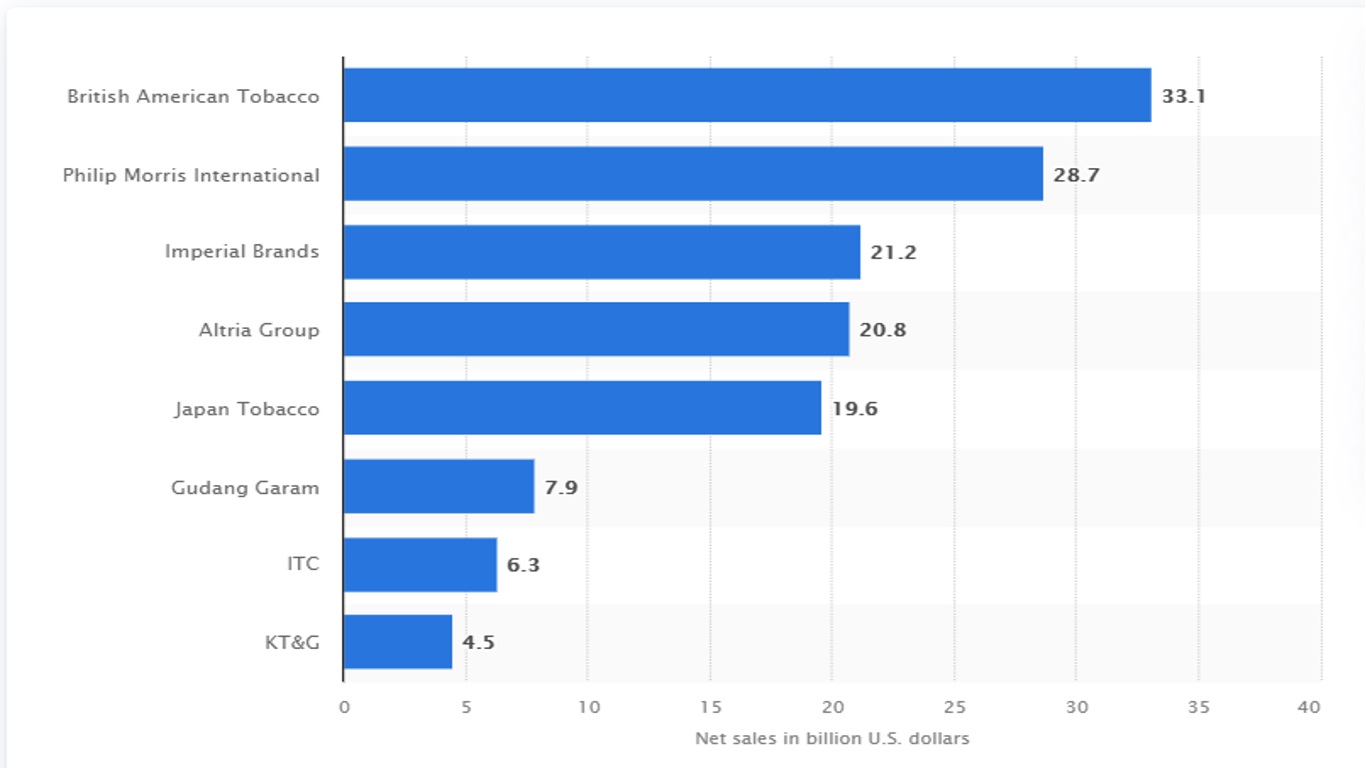
Source: Statista
In terms of legalised drugs, just a few large firms dominate the market; see Figure 14 below.
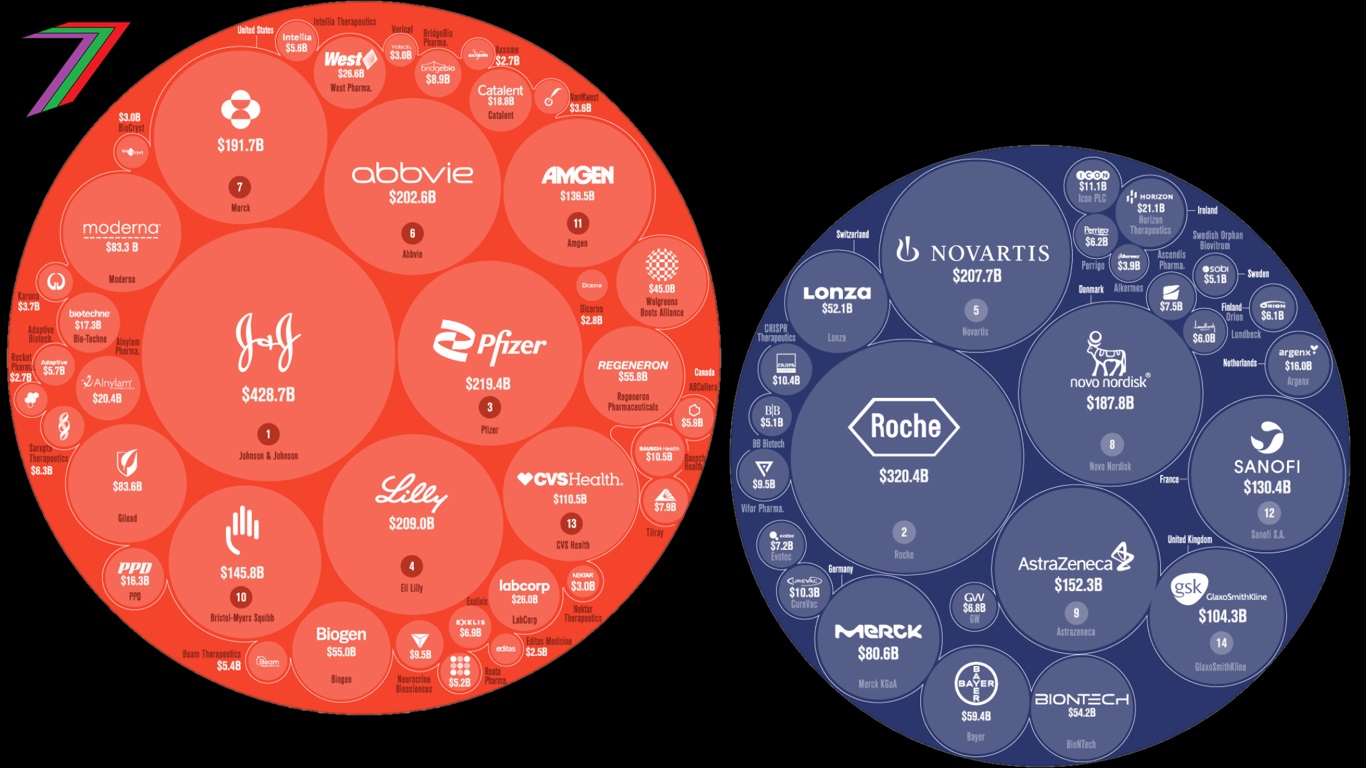
Source: Visual Capitalist
In many countries, just a few main suppliers dominate the illicit drugs markets. Wikipedia contains lists of the drug cartels for various countries such as USA, Mexico, Brazil, Peru, Japan, Sweden, Italy, UK and many others.
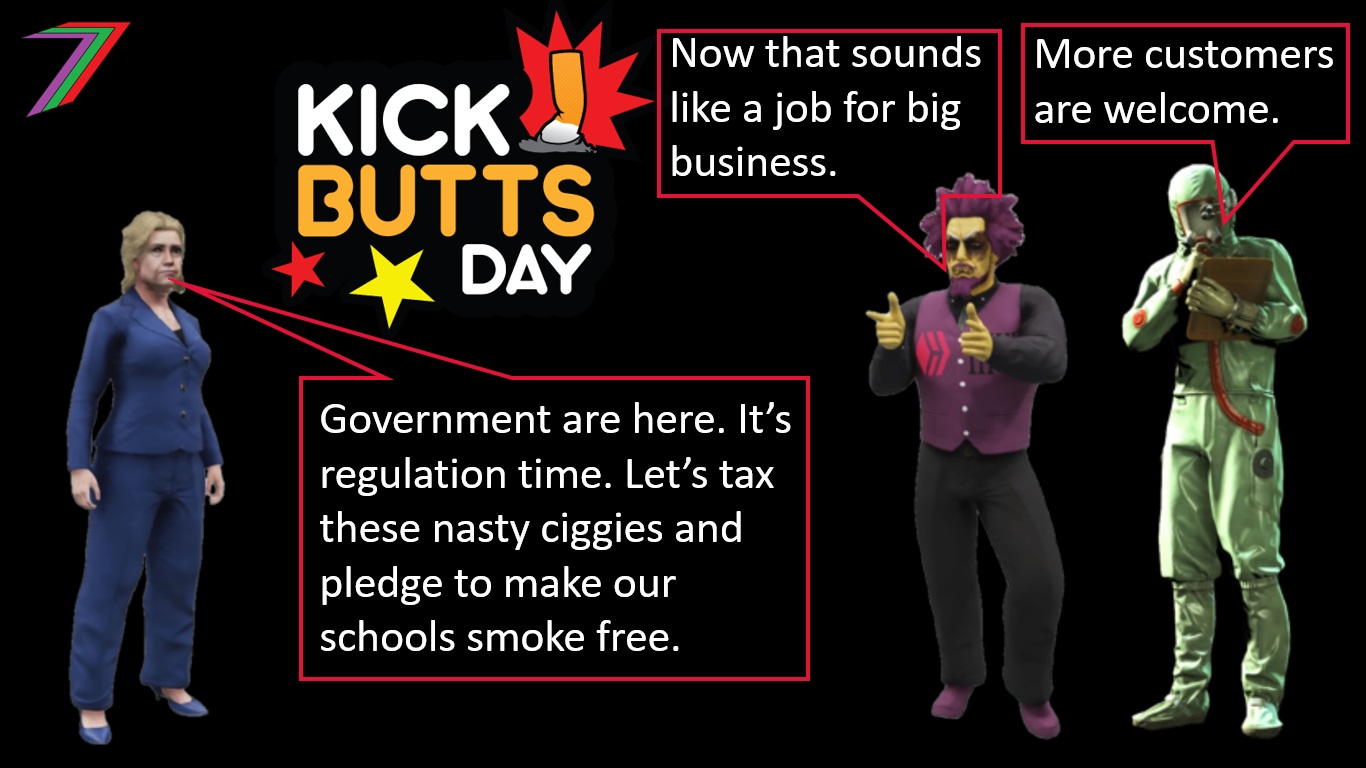
Before we can solve a problem, we need to identify the problem and its causes. I would argue the problem is the excessive consumption of something to the point it becomes harmful. In most cases, the reason for this excessive consumption is addiction. We could target the substance that is causing harm while fuelling the addiction or we could target addiction itself.
Governments normally regulate substances that are perceived to cause the most harm and are relatively more likely to cause addiction.
Do these regulations work? Addiction causes people’s demand to be inelastic. Therefore, taxes raise price with minimal impact on quantity sold. People are more likely to forgo other consumption to support their addiction. Banning leads to substances being provided illegally. This leads to higher prices and lower quality substances that are even more dangerous than if they were legalised. Reduced advertising may limit exposure to some audiences but products such as cigarettes have become very established and have gained significant exposure from existing smokers. Warning labels might be effective at dissuading smokers who are not addicted but unlikely to be effective on people who have already become addicted. Most people are aware of the dangers of smoking without needing to see the labels. It is even possible regulation could worsen the problems related to addiction, if choice is reduced and/or dependence is increased.
Addiction is profitable. It ensures a constant flow of returning customers. It is in the best interest of businesses to have addictive products. Other businesses can compete if they offer other products that fulfil a similar need but are not addictive. However, if a few large firms dominate an industry, competition is limited. The large firms are able to collude to offer similar products with the same addictive properties. Barriers to entry are normally the main reasons competition is limited. For example, barriers to entry into the tobacco market may include requirement of large manufacturing plants, contracts with major retailers (also most likely in an oligopoly market structure), and Government regulation. Smaller firms sharing facilities, more competition in retail sectors, and less Government regulation can overcome these barriers.
There are substitute products to cigarettes such as e-cigarettes. They are intended to offer a similar experience to smoking tobacco but are less harmful. E-cigarettes could be a good alternative to tobacco smokers who wish to quit smoking. However, e-cigarettes could have the opposite impact if people who never smoked previously started using them. Some e-cigarettes contain nicotine, which will still causes addiction. Figure 15 contains smoking trends for cigarettes and e-cigarette usage in teenagers.

Source: ABC News
The lower use of cigarettes could be seen as a positive indication but the usage of e-cigarettes far exceeds the decrease in cigarette usage. Therefore, the rate of addiction has likely increased even if it is for a less dangerous product. There is also the risk that teenagers using e-cigarettes will switch to cigarettes. This could occur if there are changes in Government regulations (i.e. taxes, bans, etc.).
It is important to note that a small number of large firms (i.e. oligopoly) dominate the e-cigarette market. Addiction is likely to be their intention. Figure 16 contains the market share of the largest firms selling e-cigarettes in the USA.
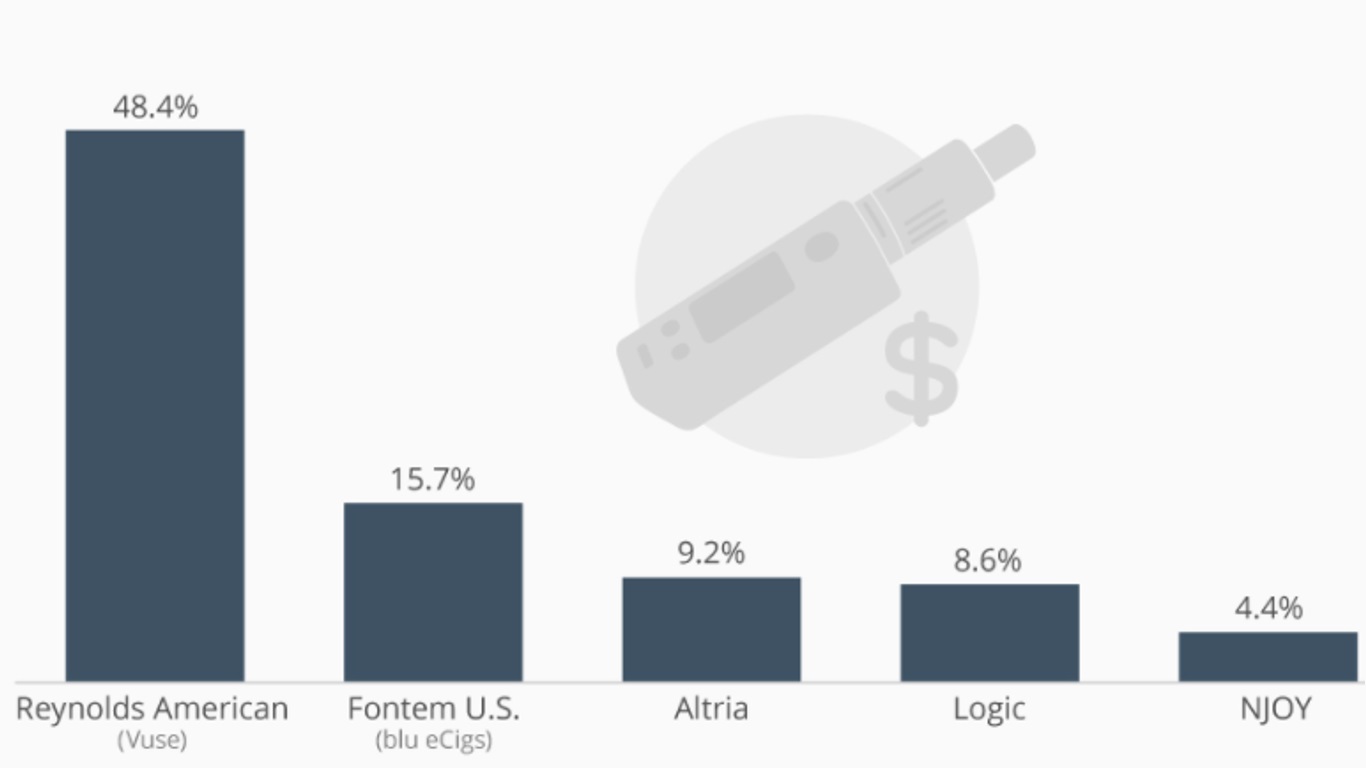
Source: Statista
Targeting addiction is likely to be a better approach than attempting to regulate products. There are many possible approaches to tackling addiction. People can be educated about the dangers of addiction as a preventive measure to reduce the chances of them becoming addicted to a dangerous substance. Whereas, people who currently suffer from addiction/s are able to seek help voluntarily. The community can play a huge role in targeting addiction. Former and currently recovering addicts can help struggling addicts as well as share their stories with young people.
We should also investigate the reasons people decide to begin to consume potentially dangerous addictive poisons. These reasons are likely to vary for different communities and countries. Many addictive substances offer relief to some form of suffering. This could be stress, peer pressure, physical or emotional pain, or long-term depression. We need to understand what is causing the suffering. If this suffering can be relieved or even prevented, we might be able to reduce the number of people who believe they need these substances and thus reduce the number of people who become addicted to them.
In my post, 'Causes, Problems, and Symptoms', I discuss the connections between causes, problems, and symptoms and the value of tackling or preventing problems at different stages. I believe the approaches discussed in that post would be relevant to addiction.

Addiction and the addictive properties of substances is a bigger problem than the poisonous content of the substances. Almost anything can become dangerous if consumed in excessive quantities and on a regular basis. It is the responsibilities of people not to consume substances to the extent they cause a health risk.
Sadly, addiction can greatly hinder people’s ability to consume in moderation. The best outcome would be to prevent addiction ever occurring in the first place. This can happen by educating young people about the dangers of addiction as well as how easy it can be for some people to become addicted. Addiction could also be reduced by greater competition between firms offering products that are potentially addictive. This will increase the safety as well as reduce the addictiveness of products (people want to be able to enjoy something without being dependent on it). Large businesses and Government are the biggest obstacle to creating a competitive environment. Addiction generates profits for the businesses and large businesses help Governments maintain power; see my post ‘Controlled Opposition and Divide and Conquer’ for a detailed explanation.
People, who are addicted to something that is destroying their health, need to want to end their addiction and be willing to take the measures necessary to do so. If they are forced into action, they are unlikely to be motivated to change. It is important that communities and families are willing to help people with addictions. It is important to have the necessary infrastructure and professionals to treat the addiction and compulsive behaviour.

If you want to read any of my other posts, you can click on the links below. These links will lead you to posts containing my collection of works. These 'Collection of Works' posts have been updated to contain links to the Hive versions of my posts.
The course contains over 10 hours of video, over 60 downloadable resources, over 40 multiple-choice questions, 2 sample case studies, 1 practice CBA, life time access and a certificate on completion. The course is priced at the Tier 1 price of £20. I believe it is frequently available at half-price.
